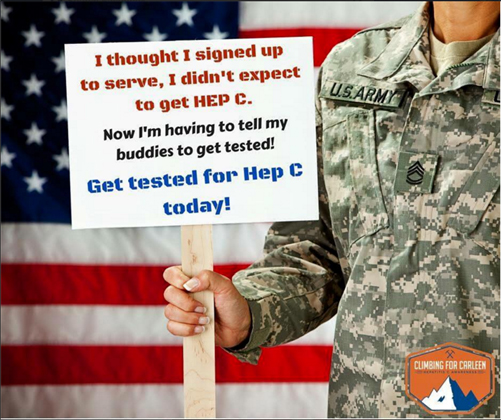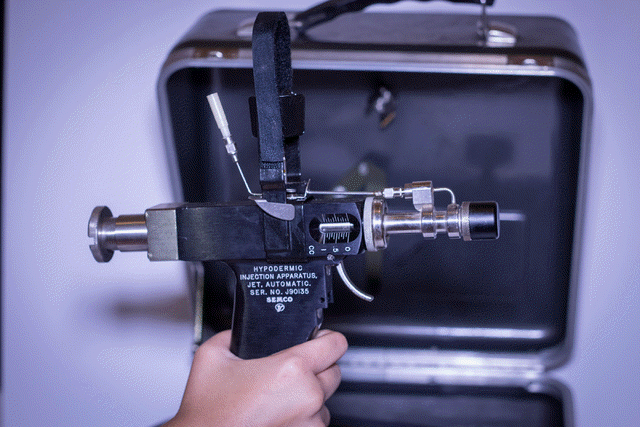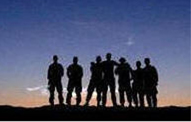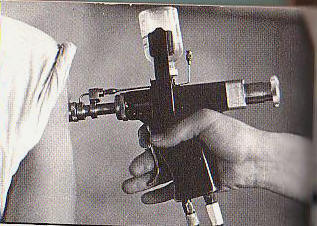|
|
||||||||||||||||||||||||||||||||
|
|
||||||||||||||||||||||||||||||||
Future Therapies for Nonresponders to Pegylated Interferon Plus RibavirinThere are several new drugs in advanced clinical development that have been evaluated in patients who did not achieve an SVR after therapy with pegylated interferon plus ribavirin. The most advanced of these are direct antiviral agents that inhibit the HCV NS3 protease. Telaprevir has the potential to increase response rates in patients who have not been cured by a first course of pegylated interferon plus ribavirin. Data are available from a randomized, double-blind, placebo-controlled phase IIb study (PROVE3), which enrolled 453 genotype 1 patients who had experienced nonresponse, relapse or breakthrough after receiving a minimum of 12 weeks of previous treatment with a pegylated interferon plus ribavirin.[48] Two of the four groups in the trial received triple therapy comprised of oral telaprevir 750 mg every 8 hours, peginterferon alfa-2a (40 kD) 180 μg/week and ribavirin 1000/1200 mg/day. Triple therapy was administered for 12 weeks followed by peginterferon alfa-2a plus ribavirin for 12 weeks in one group (T12PR24). In the second group, triple therapy continued for 24 weeks followed by peginterferon alfa-2a plus ribavirin for 24 weeks (T24PR48). The SVR rates in these two groups were similar (51% with T12PR24 and 52% in T24PR48), both of which were significantly higher than the 23% SVR rate obtained with a ribavirin-sparing regimen (telaprevir plus peginterferon alfa-2a for 24 weeks) and the 14% SVR rate obtained in the control group which received peginterferon alfa-2a plus ribavirin for 48 weeks.[48] When the analysis was conducted separately by the nature of the previous response to therapy, the SVR rates in nonresponders were 39% and 38% in those randomized to T12PR24 and T24PR48, respectively, 10% among those randomized to the ribavirin-sparing regimen and 9% in the control group. Among previous relapsers, the SVR rates were 69% and 76% in patients randomized to T12PR24 and T24PR48, respectively, 42% in those receiving the ribavirin-sparing regimen and 20% in the control group.[48] The rates of withdrawal for adverse events were highest in recipients of telaprevir-based triple therapy (10% and 25% in T12PR24 and T24PR48, respectively) than in the ribavirin-sparing regimen (9%) and the control group (4%). Adverse events that were reported more frequently in recipients of telaprevir included fatigue, nausea, headache, rash, pruritus, diarrhoea, anaemia, insomnia, pyrexia, alopecia and chills.[48] The results of this study demonstrate clearly that telaprevir has the potential to increase SVR rates in previously treated patients, but only when combined with both peginterferon and ribavirin.[49] Indeed, the SVR rate in true nonresponders treated with the ribavirin-sparing regimen in PROVE3 (10%) was very similar to that in true nonresponders treated for 48 weeks with peginterferon alfa-2a (40 kD) plus ribavirin in REPEAT (9%).[39] The results also demonstrate that the increase in SVR rates is accompanied by an increased burden of adverse events. The efficacy and safety of telaprevir in genotype 1 patients who did not respond to previous pegylated interferon plus ribavirin is being evaluated in an ongoing phase III trial.[50] Both true nonresponders and relapsers are eligible for the trial which has a planned enrolment of 650 patients. The planned duration of treatment is 48 weeks for all patients randomized to one of three treatment groups. One of the two telaprevir-containing regimens includes a 4-week delayed start during which the patients receive peginterferon alfa-2a (40 kD) plus ribavirin prior to a 12-week triple therapy phase and 32 weeks of treatment with the standard of care. The other telaprevir-containing regimen comprises a 12-week triple therapy phase followed by 36 weeks of treatment with the standard of care. The control group will receive the standard of care for 48 weeks.[50] This trial will confirm the extent to which telaprevir can increase SVR rates above that which can be achieved with the standard of care, will provide a clear indication of the adverse event profile of the drug and will demonstrate whether a delayed start improves the efficacy of telaprevir. The delayed start is a feature adapted from the boceprevir development programme. Boceprevir is another HCV protease inhibitor that has been studied in previous null responders to pegylated interferon plus ribavirin.[51] A dose-finding study evaluated boceprevir at dosages ranging from 100 to 800 mg three times daily in combination with pegylated interferon alfa-2b (12 kD) with and without ribavirin. After an interim analysis, the data safety monitoring board mandated that all patients receiving boceprevir switch to a dose of 800 mg three times daily in combination with ribavirin. SVR rates in the six boceprevir-treated groups ranged from 2% to 14% compared with 2% in patients in the control group who received pegylated interferon alfa-2b (12 kD) 1.5 μg/kg per week plus ribavirin 800–1400 mg/day.[51] After a 4-week delayed start, boceprevir will be evaluated in combination with pegylated interferon alfa-2b (12 kD) plus ribavirin in a phase III trial in previously treated patients. All patients with the exception of those with an RVR in one arm of the trial will be treated for 48 weeks.[52] As yet, no SVR is available for other classes of direct-acting anti-HCV agents (e.g. polymerase inhibitors) in nonresponders to the standard of care. Preliminary data from an early phase clinical trial show a greater than 4-log reduction in HCV RNA can be achieved in genotype 2 or 3 nonresponders to pegylated interferon plus ribavirin after 14–28 days of treatment with the HCV polymerase inhibitor R7128 when administered at a dosage of 1500 mg twice daily in combination with peginterferon alfa-2a (40 kD) plus ribavirin.[53] In addition to direct-acting antiviral agents, another interferon (albinterferon alfa-2b) is in advanced clinical trials. Albinterferon alfa-2b is a fusion protein comprising interferon alfa-2b and human albumin. The drug is being studied in combination with ribavirin in a series of ongoing phase II and III trials. In January 2008, all patients receiving albinterferon alfa-2b at a dosage of 1200 every other week in phase III trials were switched to a lower dose of 900 μg every other week because of a higher incidence of serious pulmonary adverse events in those receiving the higher dosage. The combination of albinterferon alfa-2b plus ribavirin has been evaluated in prior nonresponders to interferon-based therapy including the current standard of care.[54] The overall SVR rate was 17.4% (20 of 115 patients) using doses up to 1800 μg every other week. Among genotype 1, patients who were nonresponders to previous pegylated interferon plus ribavirin therapy, the SVR rate was 10.7% (8 of 75 patients) after 48 weeks of treatment. Clinical studies in previously treated patients are ongoing for telaprevir (with peginterferon alfa-2a (40 kD) plus ribavirin), boceprevir (with pegylated interferon alfa-2b (12 kD) plus ribavirin) and albinterferon alfa-2b in combination with ribavirin. The earliest that any of these agents may reach the market is expected to be 2010.
|
|
|
|





